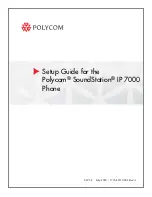
CHAPTER 20: Social Media and Skype
412
The Mechanics and Culture of Twitter
We tend to think of Twitter like a noisy party where everyone has to speak loudly. As you
walk through the party, you can hear snippets of conversations, but you can’t always be
sure who is being addressed. We’re not the only one to make that observation. In fact,
there’s an entire book that uses the party analogy:
Social Media Is a Cocktail Party
by
Jim Tobin and Lisa Braziel (CreateSpace, 2008).
The basic mechanics of Twitter are this. Twitter is a free service available at
. Every user can make 140 character posts in her own Twitter
“stream.” You can follow other users, and they can follow you. You have a stream of all
the posts from people you follow. You can choose to make your stream public or visible
only to those you preapprove as followers, but you can’t specify privacy on individual
posts. The number of followers a person has can be taken as a measure of authority,
though it’s not an absolute measure. Ashton Kutcher’s Twitter account is far more
popular than Eric Schmidt’s account, even though many would argue that the CEO of
Google has more authority in his tweets.
Many of Twitter’s conventions are ad hoc creations designed to work around some of
Twitter’s shortcomings. Twitter is an unthreaded conversation stream. You can make a
post in a stream as a reply to someone else, but your response remains in your Twitter
feed, not the other person’s. In order to indicate replies, people began using the
@username
convention. For example, replies to Marziah would be
@marziah
. Eventually,
Twitter worked this into the system and began making automatic links to users based on
this, letting users know whenever they had a new
@reply
or
@mention
.
Retweets
If someone says something you agree with, like, or want to repeat, you don’t repeat it,
you retweet
it. A
retweet
is a repeat that gives credit to the original author. The
convention for retweets is
RT: @username
, followed by the repeated message. Twitter
also picked up on this convention and now allows you to press a button and retweet
messages with the other user’s icon to indicate the source. However, some users still
opt for the old
RT: @username
style retweets because this approach allows them to add
commentary before the retweet.
Hashtags
Searching for relevant information on a given
topic is difficult, so users began putting unlikely
character combinations into their posts to tag
them or help them sort related posts in
searches.
Summary of Contents for DROID 2 Global
Page 1: ...DROIDS Made Simple MartinTrautschold Gary Mazo Marziah Karch DROIDS ...
Page 3: ......
Page 25: ... ACKNOWLEDGMENTS xxii ...
Page 27: ......
Page 55: ......
Page 61: ...INTRODUCTION 36 ...
Page 63: ......
Page 121: ...CHAPTER 2 Typing Voice Copy and Search 96 ...
Page 151: ...CHAPTER 4 Other Sync Methods 126 ...
Page 213: ...CHAPTER 7 Making Phone Calls 188 ...
Page 245: ...CHAPTER 9 Email on Your DROID 220 ...
Page 349: ...CHAPTER 15 Viewing Videos TV Shows and More 324 ...
Page 367: ...CHAPTER 16 New Media Reading Newspapers Magazines and E books 342 ...
Page 415: ...CHAPTER 18 Taking Photos and Videos 390 ...
Page 493: ...CHAPTER 21 Working With Notes and Documents 468 ...
Page 529: ...CHAPTER 24 Troubleshooting 504 ...
Page 531: ......
Page 549: ...CHAPTER 25 DROID Media Sync 524 ...
Page 581: ...APPENDIX DRIOD App Guide 556 ...
Page 611: ......
Page 612: ......
Page 613: ...Index ...
Page 614: ......
Page 615: ...Index ...
Page 616: ......
Page 617: ...Index ...
















































